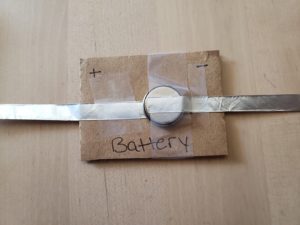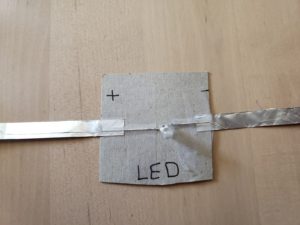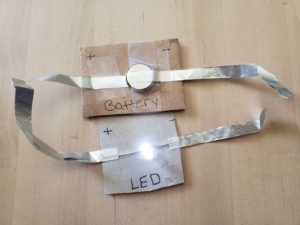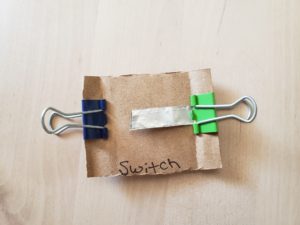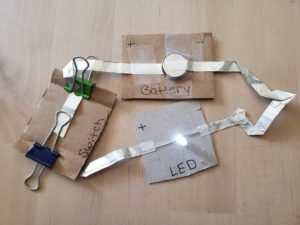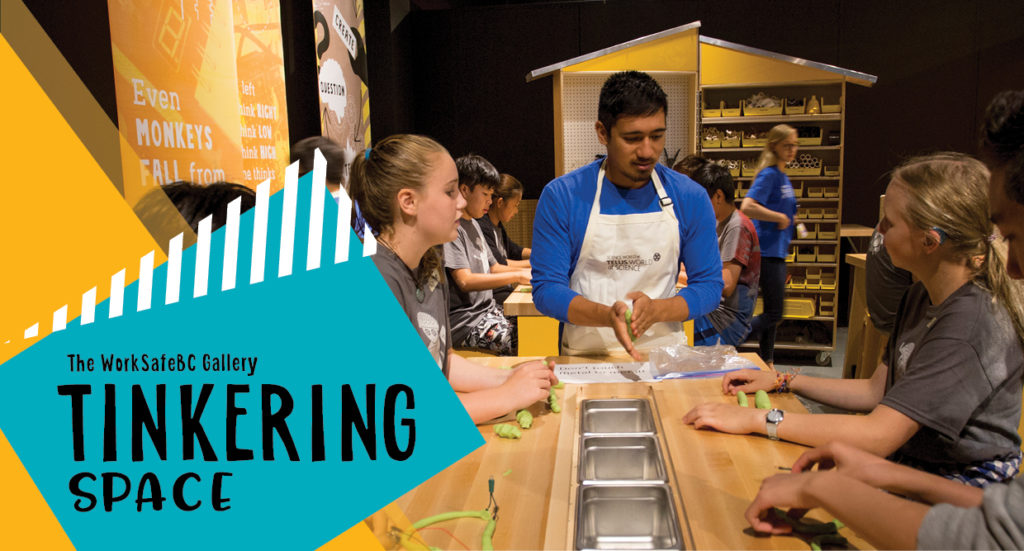In this activity students will explore the flow of electrons and build a complete electrical circuit.
A complete circuit is an uninterrupted path for electrons to flow from an energy source (i.e. battery or household power), through a device and back to the source. If we break that path, the flow of electrons stops, and we no longer get energy from our circuit, and the device no longer has power.
In order to use electric current to power our lights, computers, or hairdryers, we need a complete circuit.
